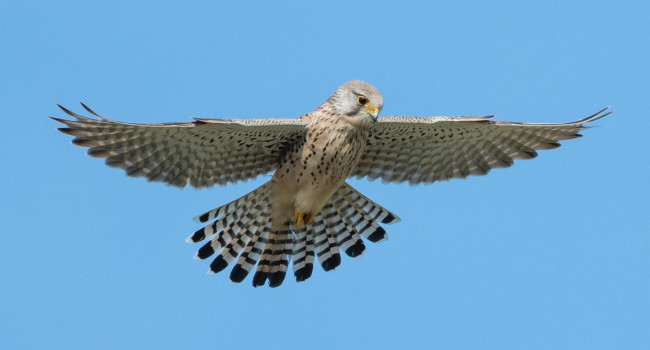Chaffinch
Fringilla coelebs

The plumage of the Chaffinch is unmistakable and this species is extremely unlikely to be confused with any other species, except possibly Brambling. During winter, the male Chaffinch has a red-buff head and nape, a buff-chestnut back, olive-green rump and pink-red cheeks, throat and chest. The belly is a creamy-white. Towards the end of the winter, the tips of the feather become worn away, revealing the stronger tones of the breeding plumage lurking below. As a result of this abrasion, the slate-blue crown and nape become exposed, as does the chestnut back. In flight, the two white wing bars can be seen.
Female Chaffinches and immatures are less strikingly coloured, with an overall drab brown-grey-green appearance to the back and head and a buff off-white belly and chest. Again, the two white wings bars can be seen in flight. Chaffinches are about the size of a House Sparrow but have a thinner more elongated shape, with a longer tail. There are a number of calls made either in flight or when perched, notably a strong, clear ‘pink’, but it is the song that is most characteristic and no doubt familiar to Garden BirdWatchers across Britain. The song is loud and bright in presentation, characteristic (though with regional dialects) and repeated often from a prominent perch.
During the autumn and throughout the winter, Chaffinches will feed on seeds taken on the ground. It is during this part of the year that large flocks can be witnessed feeding at suitable food sources in open countryside. These large flocks are usually made up of wintering Continental birds that first arrive during late October. Birds seen singly or in small groups within suburban gardens will almost certainly be local resident birds.
Male Chaffinches begin to defend their breeding territories in February, a time when many Continental Chaffinches are still present in Britain as part of the wintering population. Despite the early start to the establishment and defence of a breeding territory, nest building does not begin until April or even early May. Chaffinch nests are beautifully constructed, well-camouflaged and often difficult to locate. The hen is responsible for building the nest and spends some time searching for a suitable nest site. Eggs are laid one a day and incubation begins with the penultimate egg and lasts for 11-14 days. The young are fed on invertebrates, typically small caterpillars.
Find out more about Chaffinches on BirdFacts and the Wider Countryside Report.






Share this page